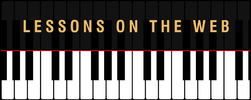|
Who doesn't love emoticons!? Questions is...why do we love them so much? Take a look at these 16 different faces. I bet that most of you can apply a specific emotion to each individual one...and what's important is how quickly you can identify the emotion that each face is expressing. Within 3-5 seconds, you are able to name the feeling...right? How many of you use them in the place of words in your emails and texts? :) Several reasons that emoticons are so popular, is that they help to connect us to our emotions, help to quickly identify a specific feeling or emotion and help us to express that feeling quickly, without using a single word. Now think about some of your favorite songs and pieces that you like to listen to. They don't have to be classical either. When you think of them, what kind of emotions do you start to feel? Happy? Sad? Festive? Pensive? Angry? Joyful? There's such a wide range of feelings in the extent of our emotional experience, that even one feeling such as happy, can have lots of different levels. We know that music connects us to our emotions because of the different emotional responses we have to different tunes. One of the most incredible things to learn and then experience, is how to add an emotional level to your piano playing. It isn't something that you learn in the very beginning, because most of your time is dedicated to learning notes, rhythm, chords, and theory. Adding musical expression to your playing is something you start doing some on your own, just instinctively. As you grow in your skills though, it's time to start learning how to include and create the emotional layer in your playing. So how do we express emotions in our own piano playing?
When you start focusing more on the musical expression in your music, try using these steps one at a time. You can even experiment with them while playing a scale that you know well, to see what different kinds of emotional sounds come out, when you play some parts with different dynamics, or different tempos. Then add in some shorter and longer notes to see what difference those make. Finally, try this in different keys - some major and some minor scales, to note how the emotional context changes within the different keys that we have to play in. Have fun learning how to express your emotions in your piano playing, and let us know how you are doing with it! Stay Tuned to LessonsOnTheWeb to learn much more! Leave a Reply. |
AuthorMost blogs written by Archives
June 2020
Categories
All
|


 RSS Feed
RSS Feed